How to corpsilate an item
Material List:
Latex
Cotton Balls (be sure to not get "Puffs" because they are actual balls of cotton not rolled up layers of cotton)
Latex-based house paint (your choice of color)
Rags
Paint brushes
Old clothing
The item you wish to work on
What to do before working:
Take a drop of latex and put it on your inner arm near the elbow and let it dry. This is a test to make sure that you
are not allergic to the latex. If there is redness, burning, or discomfort you might want to wear vinyl gloves when working with latex.
Change into old clothing that you don't mind if they get ruined. If latex gets into any material
the odds are that it is not coming out, so please keep latex away from important clothing or other items.
Instructions:
1. Latex by nature is clear to flesh-toned depending on how thick it is applied and will turn orangish as it is exposed to light due
to the fact that it is an organic material; therefore, it is recommended to start with colored latex to simplify painting and life of the piece.
To achieve this add latex-based house paint to the latex:
Add some paint, mix thoroughly, then test the color on something like a piece of wood, concrete, or even your project. Latex dries much darker
than it looks wet. Once you have the color ratio that is the lightest you want your finished product to look then you are ready to start.
2. Take the time to carefully unroll the cotton balls and have them handy. Latex dries quickly so once you
start you will not have much time to stop and unroll more.
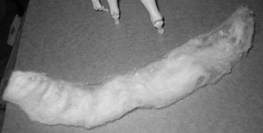
3. With your fingers put a layer of latex across the item that you are working on in an area about twice the size
of the piece of cotton that you are going to put on the item.
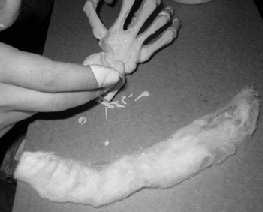
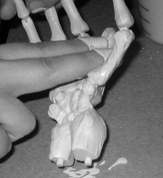

4. Lay the cotton strips down on the latex and pat it down with your fingers.
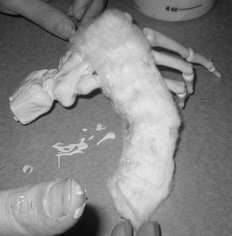
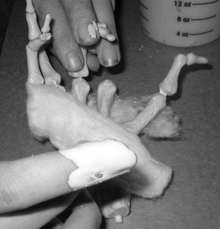

5. Wet your fingers with latex and liberally coat the cotton you have put on your project.

6. Go back and gently pull the cotton apart across the item.

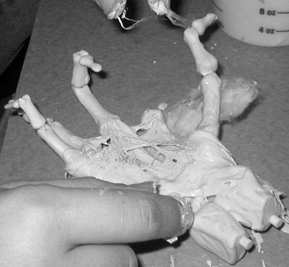
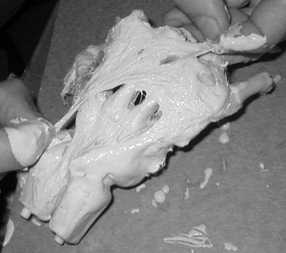
7. Repeat steps 3-6 as much as needed to cover the entire project.
Once the latex is dry if you want more depth to the project you can put more layers on following steps 3-6.
8. Take a darker shade of your house paint (in some cases you might even want to use black) and water it down. Paint an area of your project and immediately with a wet rag wipe off the excess paint. This will add depth to your project so that the highlighted areas will be the color of your latex and the recessed areas will be a darker shade.
9. Take a second look at your paint job when you are finished. In some cases you might want to dry brush highlights on parts of the project or with a small brush even darken some of the recesses.